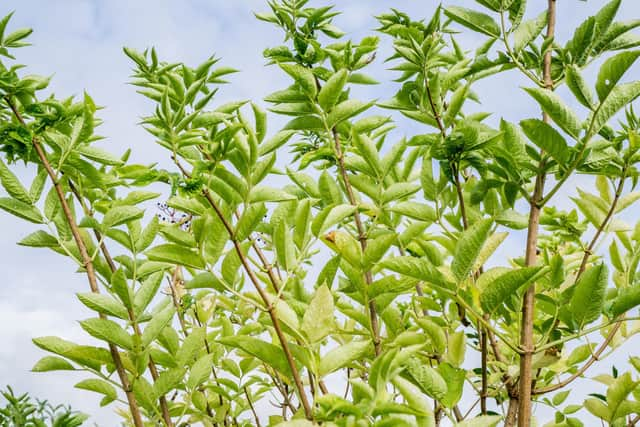Early sightings of spring becoming the norm due to climate change says the Woodland Trust
The Woodland Trust runs the Nature’s Calendar citizen science scheme, which gathers sightings of the signs of the seasons from the public.
One of the first trees to come into leaf is the elder tree and for the last five years, records of first leafing collected by members of the public have been earlier than the 20-year average by four to 16 days, the charity said.
Advertisement
Hide AdAdvertisement
Hide AdThis year, which saw the warmest February on record for England and Wales, seems to be following suit, according to the Woodland Trust.


First leafing of other tree species including larch, rowan and oak have been appearing two to three weeks early in 2024.
And the Nature’s Calendar scheme has already received many sightings of brimstone butterflies, one of the first to be spotted each year, about two weeks earlier than expected, the trust said.
Other organisations such as the National Trust and the Royal Horticultural Society have also reported early flowering and blossoming at their sites.
Advertisement
Hide AdAdvertisement
Hide AdOver the longer term, the England “spring index” of key seasonal events is now – based on the period 1998-2022 – running around 8.9 days in advance of the average for the period 1891-1947.
The spring index is calculated from average dates of the first flowering of hawthorn, first flowering of horse chestnut, first appearance of an orange tip butterfly and first sighting of a swallow, and also draws on Nature’s Calendar data.
Dr Judith Garforth, citizen science officer at the Woodland Trust, recorded elder first leaf on February 20 in North Yorkshire and said spring is spreading north rapidly.
“Whilst the sighting of an elder in leaf was a very welcome glimmer of spring after all the grim wet weather, it was much earlier than I’d expect, especially this far north.
Advertisement
Hide AdAdvertisement
Hide Ad“Overall though, the general trend is continuing with spring arriving earlier and becoming something like the new norm.
“Our data provides the clearest evidence of a changing climate affecting wildlife.”
However, the conservation charity warns that earlier springs can mean wildlife food chains become “mismatched”, such as early oak leafing leading to an earlier peak in moth caterpillars, which may affect the breeding success of blue tits that feed their young on them.
And insects can emerge too early in the spring before there are many flowers blooming to provide sufficient food resources for them, Dr Garforth said.
Advertisement
Hide AdAdvertisement
Hide AdThe Woodland Trust is asking for more volunteers to become citizen scientists and contribute sightings to Nature’s Calendar, to contribute to a biological record stretching back nearly 300 years and help scientists track changes.
Comment Guidelines
National World encourages reader discussion on our stories. User feedback, insights and back-and-forth exchanges add a rich layer of context to reporting. Please review our Community Guidelines before commenting.
